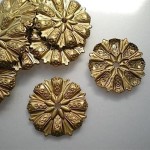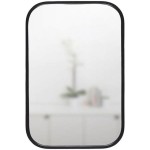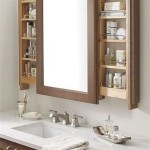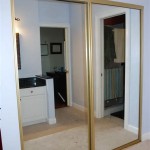Sea Glass Mirror Frame: A Guide to Creation and Appreciation
Sea glass, nature's tumbled and frosted jewels, offers a unique and captivating medium for crafting decorative items. Among these, sea glass mirror frames hold a special appeal, blending functionality with artistic expression. The frame, often a simple structure, serves as a canvas to showcase the beauty of the collected glass pieces, creating a piece that reflects both the crafter's skill and the ocean's artistry.
The origins of sea glass lie in discarded glass objects that find their way into bodies of water. Bottles, jars, tableware, and even window panes are tossed aside or lost, eventually making their way into the ocean, lakes, or rivers. Over time, the relentless action of waves, currents, and sand gradually smooths the sharp edges of the glass, transforming discarded shards into the coveted frosted treasures sought by beachcombers.
The frosting effect, a key characteristic of genuine sea glass, results from the long-term chemical reaction between the glass and the surrounding water. This process leaches out certain components of the glass, creating a pitted surface that scatters light, giving sea glass its distinctive soft, matte appearance. The time required for this transformation varies depending on factors like the type of glass, water chemistry, and the intensity of the waves and currents. Decades, even centuries, may be needed to achieve the desired smoothness and frosting.
Creating a sea glass mirror frame requires several essential materials beyond the sea glass itself. A sturdy base frame, often made of wood or metal, provides the foundation. Adhesive suitable for both glass and the chosen frame material is crucial for securing the sea glass pieces. Depending on the desired aesthetic, fillers like grout or resin can be used to fill gaps between the pieces, providing a smooth, finished look.
The design process for a sea glass mirror frame allows for considerable creativity. Some prefer a uniform look, selecting pieces of similar size, shape, and color. Others embrace the inherent randomness of sea glass, incorporating a variety of colors, shapes, and sizes for a more eclectic appearance. The arrangement can follow a specific pattern or embrace a more organic, free-flowing design. The possibilities are limited only by the available sea glass and the crafter's imagination.
Collecting sea glass for a frame can be an enjoyable pursuit in itself. Beachcombing is a popular method, requiring patience and a keen eye to spot the frosted treasures amidst the sand and shells. While some beaches are renowned for their sea glass abundance, research and local knowledge can often lead to fruitful discoveries closer to home. As an alternative, purchasing sea glass from reputable sellers allows crafters to acquire specific colors or sizes that might be difficult to find naturally.
Once the sea glass is collected or acquired, the crafting process begins. Thoroughly cleaning the sea glass is crucial to ensure proper adhesion. Soaking the pieces in soapy water and gently scrubbing with a soft brush removes any dirt or debris accumulated during their time in the water. After drying thoroughly, the sea glass pieces can be arranged on the frame to finalize the design before permanent attachment.
Applying the sea glass to the frame requires precision and patience. Working in small sections, adhesive is applied to the back of each piece before carefully placing it on the frame. Maintaining even spacing and alignment between pieces contributes to a professional-looking finished product. Allowing sufficient drying time between stages, as indicated by the adhesive manufacturer’s instructions, ensures a secure bond.
Filling gaps between sea glass pieces enhances the frame’s overall appearance. Grout, available in a range of colors, can be applied and smoothed with a spatula or similar tool. Alternatively, resin offers a clear, glossy finish, showcasing the sea glass while creating a smooth surface. Following the manufacturer's instructions for mixing and application is critical for achieving optimal results with either material.
Beyond its decorative function, a sea glass mirror frame can be a meaningful and symbolic item. Each piece of sea glass carries a unique history, shaped by the forces of nature over time. The frame becomes a tangible representation of the ocean's power and the constant cycle of renewal. The various colors and shapes of the sea glass can also evoke personal memories or associations related to the sea, further enhancing the frame's sentimental value.
Maintaining a sea glass mirror frame requires minimal effort. Dusting with a soft cloth or brush removes surface particles. Avoid abrasive cleaners, as these can scratch the sea glass or damage the frame material. With proper care, a sea glass mirror frame can be a cherished decorative item for years to come, a testament to the beauty of repurposed materials and the enduring allure of the sea.

Sea Glass Diy Projects Frame And Vase Mosaic Crafts

Sea Glass Beach Scene On Mirror Art
Sea Glass Mirror Beach For Coastal Nautical Decor Grass Cottage Artisan Handmade

Beach Decor Sea Glass Mirror Nautical

Sea Glass Mirror Coastal Farmhouse Art
Custom Sea Glass Mosaic Mirror Phoenix Handcraft

Nautical Home Decor Sea Glass Mirror Rectangle

Sea Glass Mirror For Beach Decor Nautical Coastal Grass Cottage Artisan Handmade

Beach Decor Sea Glass Mirror Nautical Art

Beach Glass Mirror By K T From Key West Florida








